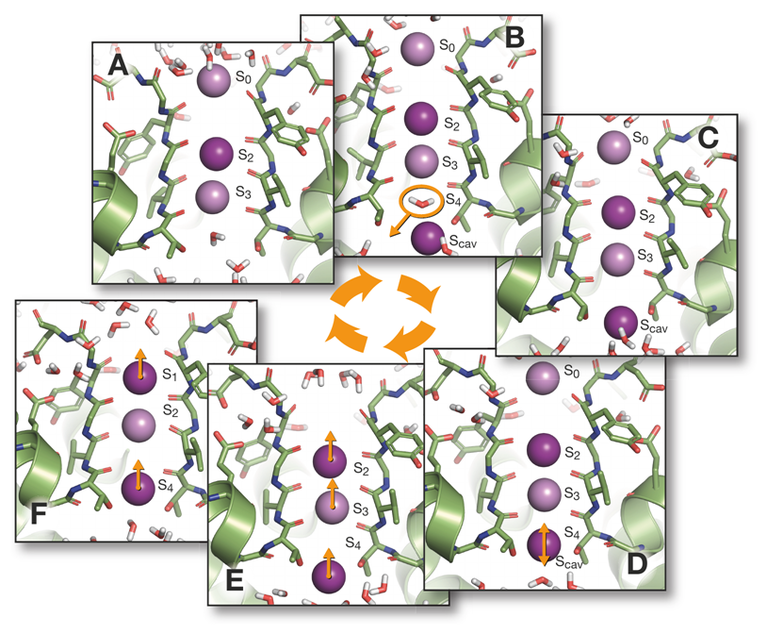The molecular dynamics of potassium channel permeation, selectivity and gating
Structural and functional studies have revealed significant insight into the working of the selectivity filter (SF) in K+ channels that mediate high K+ selectivity, high ion permeation but also undergo structural changes leading to selectivity filter gating mechanisms. Our latest results suggest that ion selectivity in K+ channels is ultimately based on interactions of fully desolvated ions in the SF, which renders Na+ ions nonpermeable due to their higher dehydration penalty as compared to K+ ions. Simultaneously, 'naked' K+ ions group closely together in the K+ SF, allowing for efficient K+ permeation as shown previously. (With respect to the latter our recent findings suggest that in K2P channels (e.g. TRAAK) voltage dependent gating is mediated by the SF and involves changes in ion occupancy and shows a dramatic ion species dependence.) MD simulations will be carried out to understand the different functional properties of the SF (i.e. selectivity, permeation and gating) with atomistic precision in four types of channels (KcsA, Kv1.2, TRAAK and MthK). These channels share a structurally similar SF and all display prominent SF gating such as C-type inactivation (KcsA and Kv1.2) or voltage gating (e.g. TRAAK). Additionally, mutants of these channels, that are known to affect one of three investigated properties (permeation, selectivity and gating) will be also studied, as well as the effects of new mutations, predicted in silico, will be proposed for a direct electrophysiological comparison carried out in the Baukrowitz group (P1).


